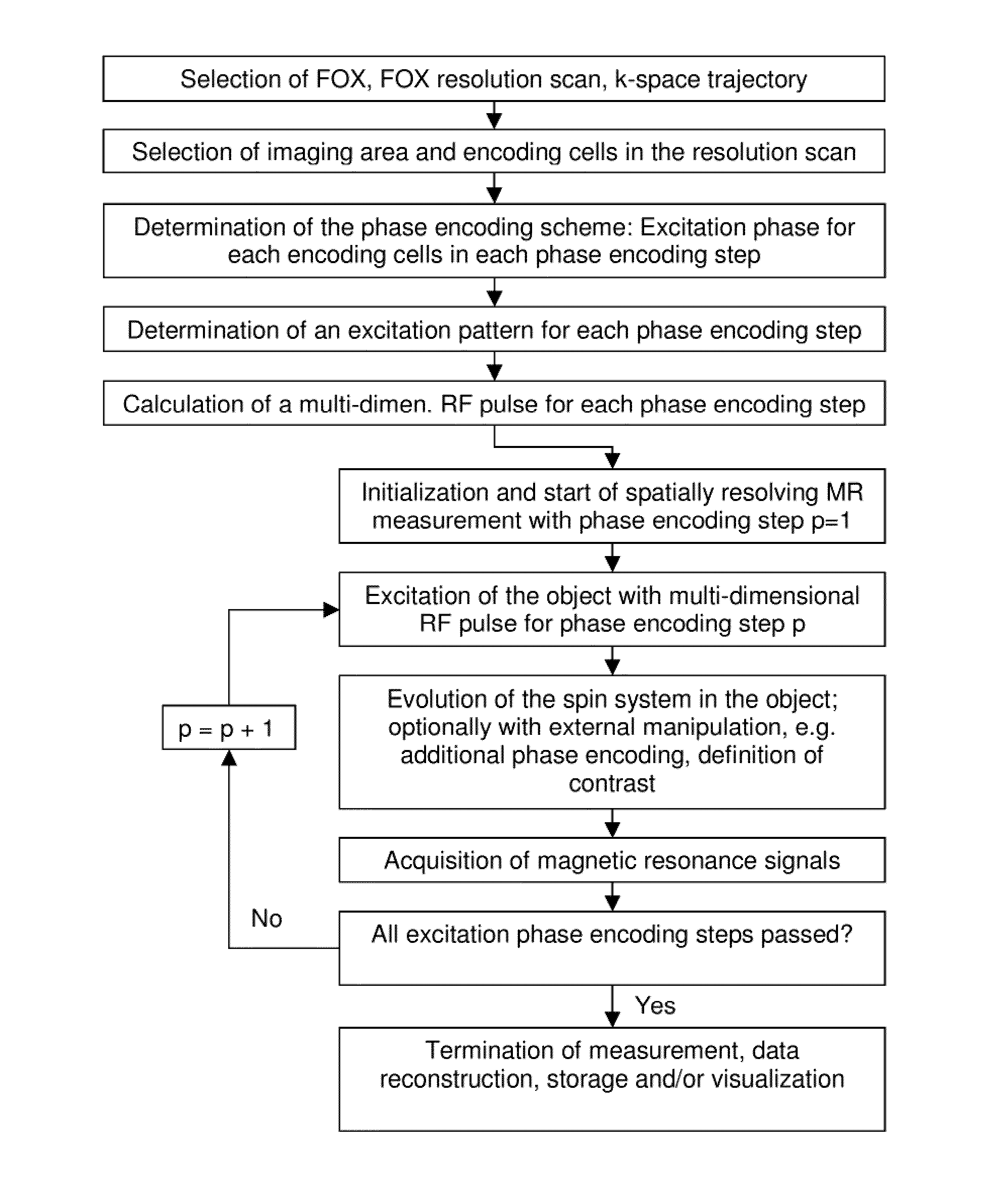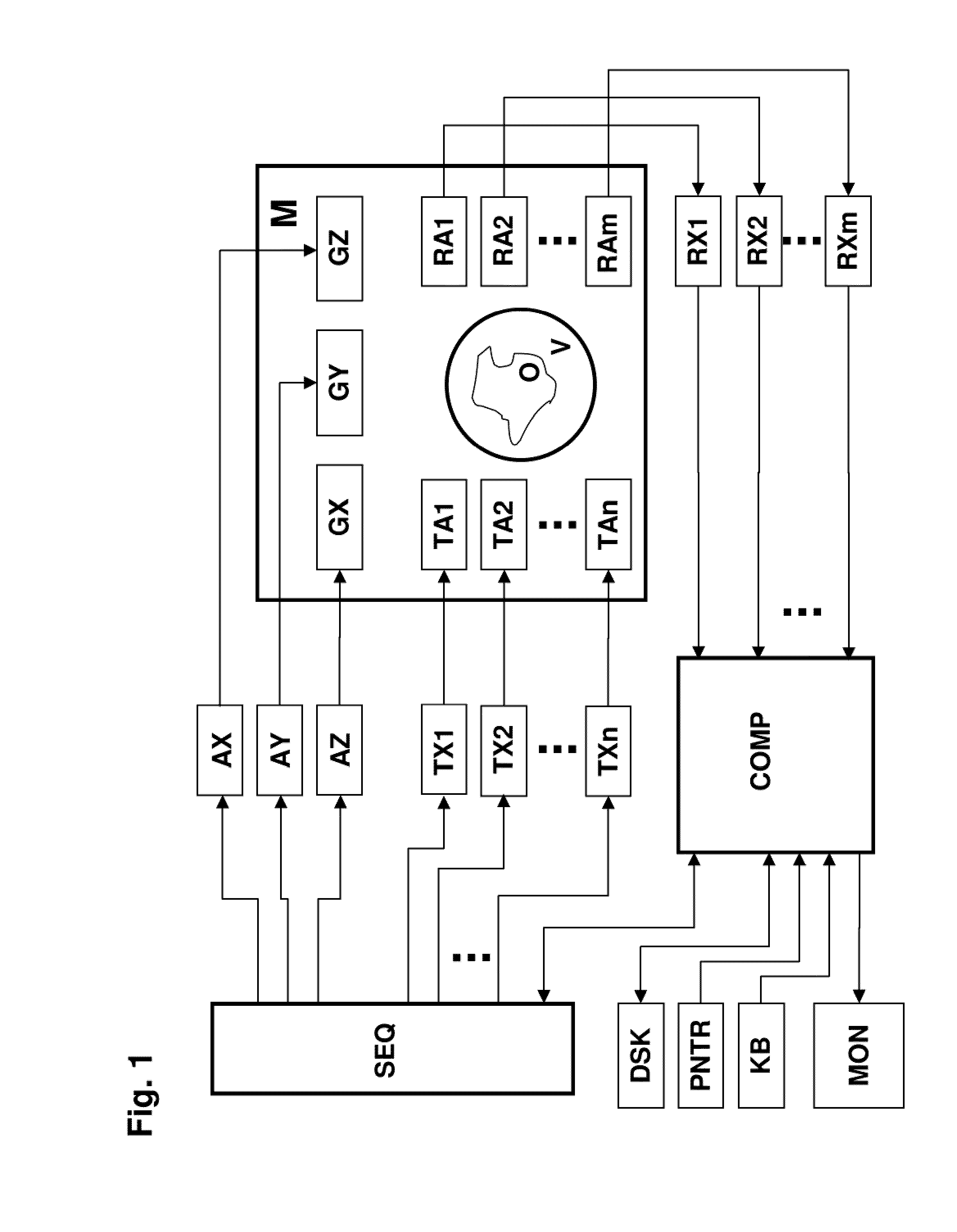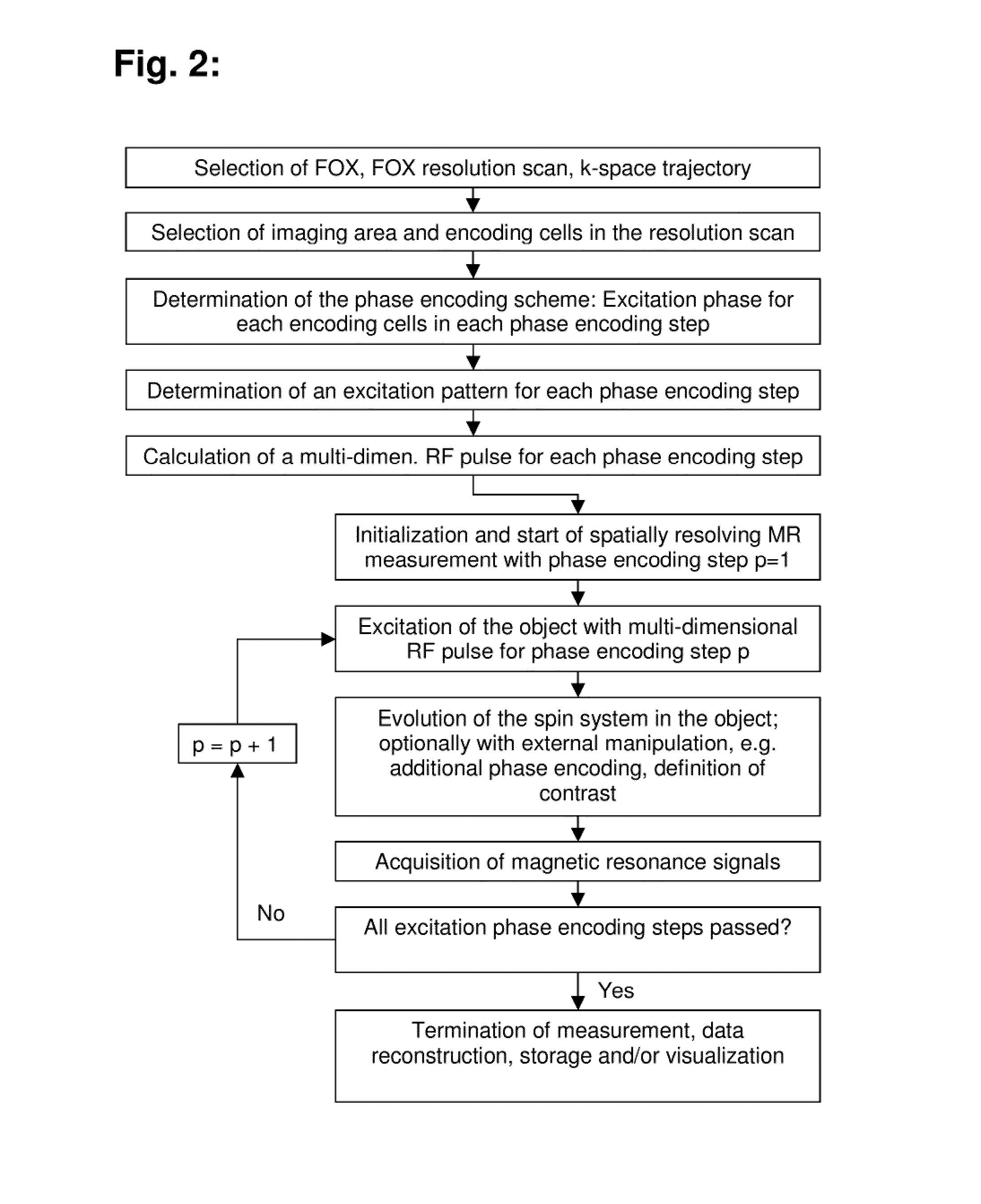Method for determining the spatial distribution of magnetic resonance signals through multi-dimensional RF excitation pulses
a technology of excitation pulse and magnetic resonance signal, which is applied in the direction of reradiation, amplifier, transmission, etc., can solve the problems of reducing the time required therefor only to a limited degree, reducing the efficiency of resonant frequency measurement, and reducing so as to reduce the delay of signal acquisition, shorten the relaxation time, and eliminate the delay
- Summary
- Abstract
- Description
- Claims
- Application Information
AI Technical Summary
Benefits of technology
Problems solved by technology
Method used
Image
Examples
Embodiment Construction
[0072]FIG. 1 schematically shows an MR measuring system which is suited for performing the inventive method. The system contains a main magnet M for generating the basic magnetic field which is substantially homogeneous and static in a volume under investigation V. Three sets of gradient coils GX, GY, and GZ are introduced into the bore of the main magnet M, which surround the volume under investigation V, and can superpose additional magnetic fields of controllable duration and strength with constant gradients on the basic field. Gradient amplifiers AX, AY, and AZ, which are driven by a sequence control unit SEQ for timely generation of gradient pulses, provide the gradient coils GX, GY, GZ with electric current for generating substantially linear gradient fields.
[0073]Several transmitting elements TA1 to TAn are located in the gradient field system, the entirety of which is also called transmitting antenna means. They surround an object under investigation O and are fed by several...
PUM
 Login to View More
Login to View More Abstract
Description
Claims
Application Information
 Login to View More
Login to View More - R&D
- Intellectual Property
- Life Sciences
- Materials
- Tech Scout
- Unparalleled Data Quality
- Higher Quality Content
- 60% Fewer Hallucinations
Browse by: Latest US Patents, China's latest patents, Technical Efficacy Thesaurus, Application Domain, Technology Topic, Popular Technical Reports.
© 2025 PatSnap. All rights reserved.Legal|Privacy policy|Modern Slavery Act Transparency Statement|Sitemap|About US| Contact US: help@patsnap.com



